Content
- What is bulbit, the causes of development in adults
- Improper nutrition (alimentary bulbite)
- Helicobacter pylori infection
- Chronic gastritis and duodenitis
- Peptic ulcer and duodenal ulcer
- Tumors
- Giardiasis and worms
- Poisoning
- Burns
- Allergy
- Medications
- Diseases of the digestive system
- Diseases of the lungs and cardiovascular system
- Forms
- Primary bulbite
- Secondary bulbite
- Classification of pathology, symptoms
- Surface Bulbit
- Catarrhal
- Focal
- Erosive
- Follicular
- Signs of an exacerbation of the disease
- Endoscopic signs
- Does the body temperature rise with bulbitis?
- Diagnostics
- Bulbit treatment
- Medications
- Surgical intervention
- Recovery after surgery
- Diet therapy. Allowed and Prohibited Products
- Approximate diet menu for 1 day
- Herbal treatment
- Complications, prognosis
- Myths and dangerous misconceptions about Bulbit
- Bulbit video
Bulbit is a pathology, the development of which is equally susceptible to both adults and children. Bulbar inflammation department of the mucous membrane the duodenum can be acute or chronic. With pathology, a person suffers from unpleasant symptoms: nausea, pain, abnormalities in gastric motility.
Therapy should be comprehensive, with the use of medications, rejection of bad habits, dietary nutrition. If the disease is at an advanced stage and conservative treatment is ineffective, the doctor decides to perform an operation.
What is bulbit, the causes of development in adults
The inflammatory process in bulbitis affects the mucous membrane of the bulbar section (bulb) of the duodenum. The disease is often associated with chronic gastritis, acting either as its cause or effect. In isolation, pathology is rare and is more often diagnosed in the stronger sex.
The special location of the bulbar section, which is located in the place where the stomach passes into the intestine, contributes to the onset of the disease. The acidified lump of food is alkalized here and prepared for further digestion.
Also, this section opens into the gallbladder duct. Due to the combination of such factors, various pathologies of the digestive system, nutritional errors, bad habits, strong emotional shocks provoke changes in the mucous membrane of the duodenum, the most vulnerable part of which is the bulbar Department.
Improper nutrition (alimentary bulbite)
The development of alimentary bulbit is facilitated by the use of harmful, poor-quality products, an excessive passion for alcoholic beverages. Due to irregular nutrition, fast food, fatty and carbohydrate foods, strong coffee or tea gastric juice begins to be produced in increased quantities, motor function is impaired stomach.
In this case, the bulbar section of the duodenum suffers. Poor-quality food is processed for a long time, digestion becomes difficult, the duodenum begins to contract in the opposite direction, which leads to the return of food to the bulbar section simultaneously with a new portion of food from the stomach.
Helicobacter pylori infection
Bulbit (symptoms and treatment in adults depend on the cause of the disease) often develops when the bacteria Helicobacter pylori enters the body. It is distinguished by the presence of flagella, which allow it to easily attach to the mucous membrane of the digestive system.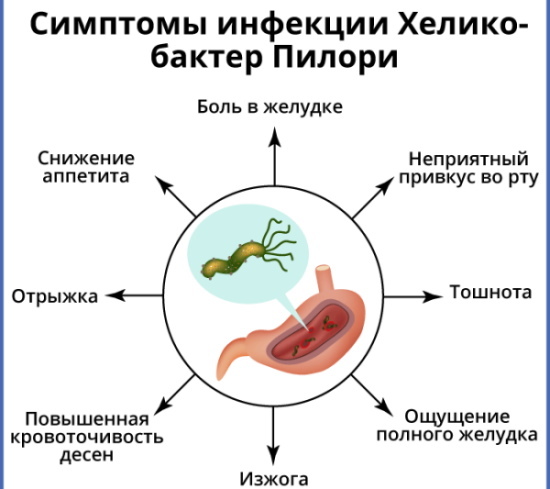
Most often, attachment occurs in the final section of the stomach, which is located near the bulbar section, which leads to damage to its mucous membrane. In response to the penetration of infection, an inflammatory process develops, which can cause the destruction of the mucous membrane, the degeneration of its cells and the appearance of a malignant tumor.
The pathogen can enter the body:
- when kissing;
- through food;
- with some instrumental studies using non-sterile instruments;
- if the rules of personal hygiene are not followed.
Chronic gastritis and duodenitis
With chronic gastritis, which is characterized by inflammation of the gastric mucosa, over time the cells of the mucous membrane are destroyed and changed, the digestion process suffers and the motor stomach function.
Pathology develops due to:
- food errors;
- food allergies;
- infections;
- smoking and hobby for alcoholic beverages.
Gastritis can be:
- hyperacid (increased acidity);
- atrophic (acidity is lowered).
The change in acidity is also reflected in the state of the mucous bulb. With increased acidity, the development of erosive bulbite is possible. In this case, the mucous membrane of the bulb has many damages (erosions) that can bleed. Low acidity can cause atrophic bulbitis.

Duodenitis increases the likelihood of damage to the bulbar section if the motor function of the duodenum is impaired (food goes back to the stomach, not into the small intestine).
Peptic ulcer and duodenal ulcer
Peptic ulcer disease is a hereditary pathology that begins to develop under the influence of various provoking factors:
- Helicobacter pylori infection;
- stress;
- poor quality food;
- medicines.
As a result, the mucous membrane of the digestive organs is damaged, and deep defects are formed, which heal for a very long time. Ulcers also appear on the mucous membrane of the bulbar section of the duodenum. This type of pathology is called ulcerative.
Tumors
In the presence of neoplasms in the bulbar section, the mucous membrane becomes inflamed. Tumors of a malignant nature are composed of glandular cells. The formation of neoplasms from lymphoid tissue (MALT lymphoma) is possible, which forms if a chronic inflammatory process is present.
In this case, there is an independent and uncontrolled division of cells of the immune system. When the division process is disturbed, the genetic apparatus of the cell changes, and its malignant transformation occurs.
In the bulbar section, tumors of a benign nature (polyps) can also form. Polyps have a leg on which they hang down into the cavity of the bulbar region, making it difficult for the digestive process. These neoplasms also often provoke mucosal bleeding.
Giardiasis and worms
Giardiasis is caused by parasites (lamblia). Their habitat is the small intestine, but the flagella allow parasites to make their way into various parts of the duodenum. The risk of developing the disease increases with thinning of the mucous membrane of the bulbar section, which is facilitated by atrophic gastritis. You can get infected from people or animals.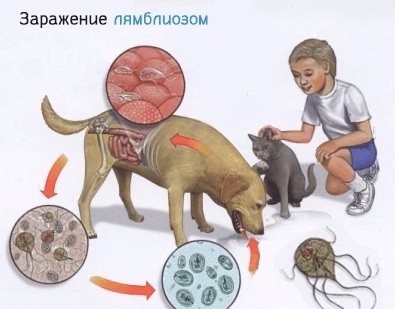 Also, damage to the mucous membrane can be provoked by worms that have penetrated the bulbar section.
Also, damage to the mucous membrane can be provoked by worms that have penetrated the bulbar section.
Poisoning
When eating poor-quality food, an acute intestinal infection develops. If the bulb is involved in the pathological process, signs of bulbit appear. Also, the body can be poisoned by toxins that do not have time to be eliminated in a timely manner, for example, with kidney pathologies. Harmful substances accumulated in the blood are released onto the mucous membrane, irritate it, provoking the development of the inflammatory process. This is how the elimination bulbite arises.
Burns
Ingestion of acids, alkalis and other substances causes burns of the bulbar mucosa. Deeper layers can also be affected, which is affected by the amount and concentration of chemicals that have penetrated inside. In this case, deformation of the bulb occurs, cicatricial changes appear, the lumen narrows and digestion is disturbed.
Allergy
Signs of illness can occur when eating foods that can cause an allergic reaction. In this case, inflammation develops in the bulb. If the pathology proceeds in a chronic form, then an exacerbation will occur every time a certain product is consumed. After excluding contact with the allergen, the condition is normalized.
Medications
Bulbit (symptoms and treatment in adults sometimes associated with medication) can be triggered by drugs, which often cause mucosal damage.
The exposure can be direct (for example, after taking Biseptol, potassium chloride) or due to insufficiently strong protective properties of the bulbar mucosa (after the use of Aspirin, Diclofenac). Also, the reason may lie in the increased acidity of gastric juice (glucocorticosteroids).
Diseases of the digestive system
All organs of the digestive system are interconnected. If any of them is affected by the disease, then the hormonal regulation of the digestive process is disrupted. At the same time, the duodenal hormonal system also suffers, whose task is to regulate the production of bile and pancreatic juice, and to normalize the motor activity of the gastrointestinal tract.
Such violations provoke a slowdown in the movement of food through the duodenum and the occurrence of bulbostasis (impaired emptying of the bulb). In this case, undigested food damages the mucous membrane, bulbit develops.
Also, pathology can arise as a consequence of Crohn's disease (inflammation of the gastrointestinal tract), which is of an autoimmune nature. In this case, deep ulcers arise that affect the entire wall of the organ.
Diseases of the lungs and cardiovascular system
With cardiovascular pathologies, oxygen starvation of body tissues, especially mucous membranes, occurs. This leads to the development of ulcerative or erosive bulbitis.
The disease can occur as a consequence:
- myocardial infarction;
- stroke;
- atherosclerosis;
- hypertension;
- heart failure;
- chronic pneumonia.
Forms
Bulbit (symptoms and treatment in adults are associated with a form of pathology), depending on the course, may be:
- sharp. Differs in rapid development, but does not last long;
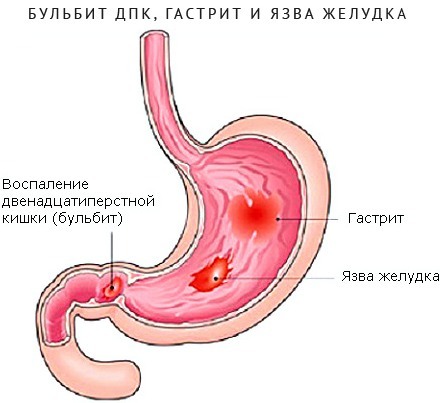
- chronic. It is present for a long time, with periods of exacerbation.
Primary bulbite
Also, the disease may be primary. It develops independently, most often under the influence of Helicobacter pylori infection, as well as stress, eating disorders. Idiopathic erosive bulbitis, which does not have an obvious cause of development, is also considered primary. Even in healthy people, single erosion of the mucous bulb can be found.
Secondary bulbite
The background for the development of the secondary form of the disease is most often the following:
- chronic gastritis;
- peptic ulcer;
- chronic pancreatitis.
Also, the occurrence of pathology is possible after taking certain medications (Indomethacin, Aspirin). The causes of the formation of erosion are also injuries, burns, toxic substances.
Classification of pathology, symptoms
Bulbit in adults has other varieties, which must be taken into account when prescribing treatment. The common symptoms for all forms are painful sensations of varying intensity.
Surface Bulbit
With superficial bulbitis, there is swelling of the bulbar mucosa, longitudinal folds thicken. The mucous membrane is mottled in appearance due to the alternation of healthy and affected areas. With pronounced edema, the inflamed areas turn red, slightly rise above the mucous membrane (motley hyperemia).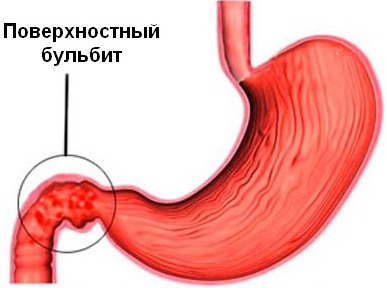
The patient experiences aching pain of moderate intensity. Sometimes they become sharp and spastic, most often appear on an empty stomach. There is also bloating, nausea, and dyspeptic disorders.
Catarrhal
Experts do not consider the catarrhal form of bulbit an independent pathology. The cause of its occurrence can be the frequent use of too hot dishes that damage the mucous membrane, constant stress, alcohol intake.
The patient may suffer from the following manifestations:
- aching "hungry" pains (more often at night);
- heartburn;
- nausea that occurs after eating;
- sour belching and bad breath;
- rapid fatigue;
- dizziness;
- excessive sweating;
- insomnia;
- irritability.
Focal
This form of the disease is characterized by the involvement of different parts of the bulbar mucosa in the inflammatory process. The main symptom of the disease is a dysfunction of the digestive system. There is also pain in the stomach. Discomfort can appear at any time of the day.
Erosive
With an erosive variety of the disease, the manifestations are more pronounced. The mucous membrane is covered with large bleeding erosive areas.  Liquid may accumulate in the bulbar section. In those areas of the organ where the edema is most pronounced, small white grains appear, which protrude above the surface.
Liquid may accumulate in the bulbar section. In those areas of the organ where the edema is most pronounced, small white grains appear, which protrude above the surface.
Follicular
This type of disease often appears when an organ is damaged by parasites. On examination, the mucous membrane can be covered with single or multiple rounded bulges with a whitish base.
Signs of an exacerbation of the disease
An exacerbation of the disease is characterized by the following manifestations:
- pyloroduodenal inflammation with involvement in the pathological process of the pyloric part of the stomach. There is swelling of the damaged mucosa, which leads to compression of the nerve endings. The duodenum contracts in the opposite direction, and this provokes damage to the mucous bile and pancreatic enzymes;
- dyspeptic symptoms, which indicate a violation of the digestive process. Bulbostasis occurs, while the vagus nerve, the nerve endings of which are irritated, sends signals to the vomiting center, which provokes the appearance of the gag reflex;
- autonomic dysfunction. With pathology, too many nerve impulses enter the brain, which leads to disruption of the work of internal organs;
- duodenal hormonal insufficiency. Chronic inflammation of the mucous membrane contributes to the destruction of cells that produce hormones that regulate the functions of the gastrointestinal tract;
- signs of intoxication. With a pronounced inflammatory process, the body seeks to remove harmful substances from the gastrointestinal tract, which contributes to increased contractions of the stomach and intestines, stimulation of the vomiting center, and vasodilation.
Endoscopic signs
During endoscopic examination, the specialist notes the presence of foci with uneven edema, inflammation of the bulbar mucosa. The affected areas are covered with microscopic hemorrhages, the mucous membrane is very sensitive, it is easy to damage it, while it begins to bleed. 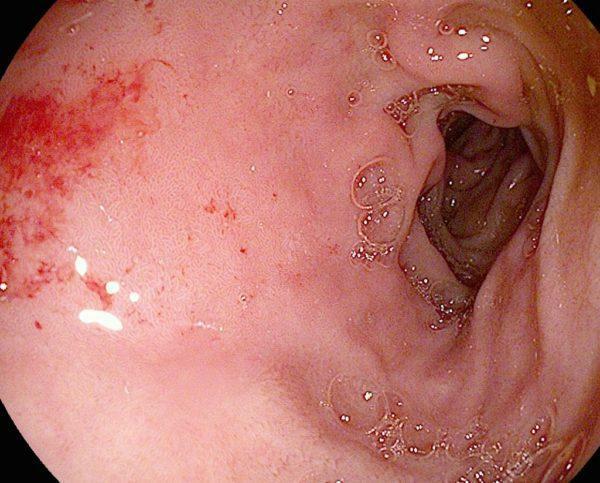
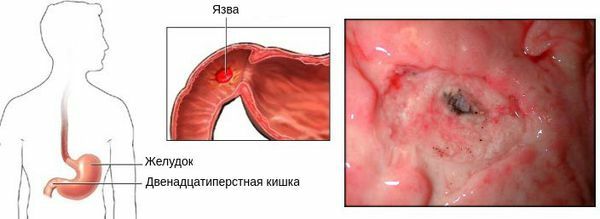 Endoscopic biopsy reveals dystrophy of epithelial cells, mucosal infiltration with lymphocytes, edema of the interstitial tissue.
Endoscopic biopsy reveals dystrophy of epithelial cells, mucosal infiltration with lymphocytes, edema of the interstitial tissue.
Does the body temperature rise with bulbitis?
Body temperature sometimes rises in the acute stage of the disease or exacerbation of the chronic form, which is facilitated by the inflammatory process occurring in the mucous membrane. Most often, the temperature rises in children, especially if the pathologies are accompanied by gastritis and duodenitis.
In an adult, the temperature may remain normal or slightly elevated (about 37ºC). In old age and in severely weakened patients, the temperature does not rise.
Diagnostics
In order to diagnose the disease, an endoscopic examination is performed. In this case, a flexible endoscope is used, which allows you to examine the mucous membrane from the inside.
It is also recommended to carry out:
- chromogastroduodenoscopy. At the same time, in the process of endoscopy, the mucous membrane is stained with special substances, which allows you to see the affected areas;
- biopsy. For the purpose of examination under a microscope, a sample of the mucous membrane is taken during the procedure;
- gastroduodenography. X-ray examination of the bulbar section is carried out after the introduction of a contrast agent;
- Helicobacter pylori infection tests. Blood, urine and feces are suitable as materials for research. Even a breath test is possible.
An ultrasound scan of all digestive organs is mandatory. For more information, you will need general and biochemical blood tests.
Bulbit treatment
Bulbit (symptoms and treatment in adults are always interrelated) is usually a consequence of other pathologies. Therefore, first of all, it is necessary to treat the underlying disease. The inflammatory process with unexpressed and inconsistent signs is easy to eliminate. Bulbit, which has persistent manifestations, requires long-term treatment.
Medications
Pathology therapy is carried out using:
-
antacids. They have an alkaline reaction, thereby helping to reduce the acidity of gastric juice. This helps to protect the mucous membrane from damage. Such medications will be effective if the disease is accompanied by gastritis with high acidity. Medicines relieve pain, heartburn, accelerate the healing of erosions;

- astringent and coating preparations. Due to the use of astringents, the mucous membrane becomes denser. A film appears on it that protects the mucous membrane from damage. Coating agents have a similar effect, only when they are used, a layer of mucus is formed. Medicines are recommended for taking in the presence of ulcers, bleeding and severe pain;
- antispasmodics. Drugs in this group do not cure pathology, but relieve spasms, relieve pain, and facilitate the passage of food;
- prokinetics. Medicines are necessary to normalize the motor functions of the stomach and duodenum, stimulate their contractions, accelerating the emptying of the bulbar section;
- reparants. Accelerate healing in the presence of erosions on the mucous membrane due to the properties of improving blood flow, activating metabolic processes;
- antibacterial agents. They disrupt the formation of the cell wall of the pathogen, are effective if the disease is caused by Helicobacter pylori;
- antiparasitic drugs. Assign for giardiasis, helminthic invasions.
Vitamin therapy is also recommended to the patient in order to restore metabolic processes and strengthen the body. Sometimes the patient is referred for consultation to a neurologist and psychiatrist, possibly the appointment of antidepressants.
Surgical intervention
Surgical intervention is necessary for:
- deep ulcers when conservative therapy is ineffective;
- deformation of the bulbar section, narrowing of its lumen;
- malignant neoplasms;
- polyps.
During the operation, the bulb is removed. Sometimes a bleeding vessel in the bulb is cauterized and polyps are removed during endoscopic examination.
Recovery after surgery
After the operation, the patient must adhere to a sparing regimen and a special diet.
In the rehabilitation period, the patient:
- adheres to a semi-bed regime;
- consumes a sufficient amount of fluids;
- consumes liquid or semi-liquid food with a gradual expansion of the diet;
- stimulates intestinal motility with feasible physical activity.
Diet therapy. Allowed and Prohibited Products
For those who suffer from bulbitis, it is necessary to exclude from the diet foods that damage the mucous membrane. Meals should be fractional and frequent. You should eat semi-liquid food. The diet should be dominated by proteins, and the amount of carbohydrates and fats should be reduced.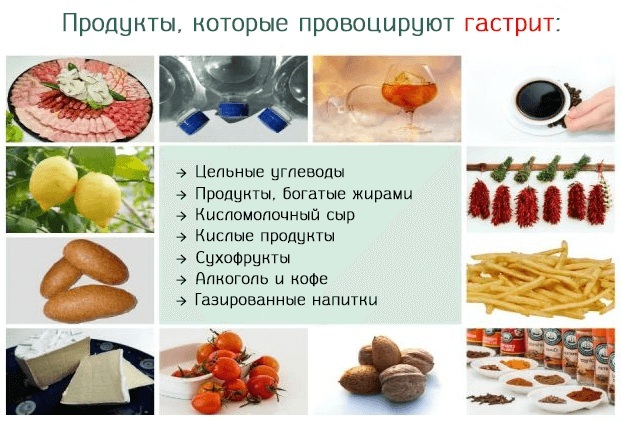
In the acute stage of the disease, it is necessary to abandon:
- fatty foods;
- tomatoes, radishes, cabbage, mushrooms;
- sour fruits;
- bread, pastries;
- smoked meats;
- broths;
- spicy food;
- carbonated water, coffee, alcohol;
- chocolate.
Allowed use:
- dried bread, dry biscuits;
- buckwheat, oatmeal;
- pureed vegetables;
- vegetable oil;
- chicken meat, boiled beef;
- low-fat fish;
- milk;
- eggs (in the form of an omelet);
- pasta;
- compotes, sweet fruits;
- honey.
Approximate diet menu for 1 day
Sample menu for 1 day
| Breakfast |
|
| Lunch |
|
| Dinner |
|
| Dinner |
|
| Before bedtime | A glass of kefir or milk |
Herbal treatment
Traditional medicines can be effective, but in some cases, their use is dangerous. Do not use folk remedies for patients with blood diseases, severe heart pathologies, immunodeficiency.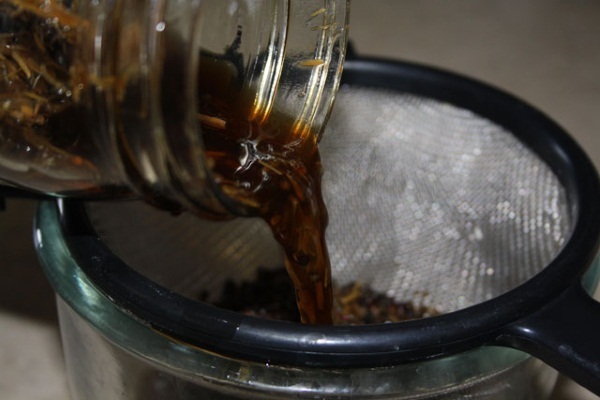
You can relieve the condition with tincture. You need to take 2 parts of chamomile, plantain and mint, add St. John's wort and yarrow (1 part each). Having combined the ingredients, you need to select 1 tbsp. l. collection, pour boiling water (500 ml), let it brew for 1 hour. The filtered agent is taken in 50 ml every hour. The therapy lasts 3 days, then for 2 weeks they drink the medicine 4 times a day before meals, 0.5 tbsp.
It is also recommended to use in the form of tea:
- cardamom, fennel, valerian, ginger - for stomach pain;
- mint, sage, yarrow - with reduced appetite;
- chamomile, lemon mint, valerian - with irritability;
- raspberry leaves - with diarrhea;
- ginger root - for nausea.
Complications, prognosis
Bulbit (symptoms and treatment in adults raise many questions, but only a doctor can determine the severity of the disease and the therapy regimen) the patient's life does not threaten. The pathological process is organic, but it all depends on the reasons that provoked the development of pathology. If this is a Helicobacter pylori infection, then with its prolonged presence in the body, the cells can mutate and degenerate into a malignant tumor.
Development of peribulbitis is also possible. In this case, the outer layer of the bulb is affected, adhesions appear, which causes intestinal obstruction.
Myths and dangerous misconceptions about Bulbit
There is an opinion that pathology can disappear on its own if you give up fatty foods. But this is not enough for a cure. Also, many believe that a course of medicines will cure forever. However, this may not be enough to solve the problem. Therefore, it is necessary to regularly check with your doctor and follow his recommendations.
With a timely visit to a specialist, the appointment of adequate treatment for bulbit in adults, the prognosis is favorable. The patient must adhere to a diet, give up bad habits, and may also need a lifestyle correction. All drugs can be used only after consulting a doctor, since many of them have an aggressive effect on the mucous membrane and can lead to increased symptoms.
Bulbit video
Malysheva about inflammation of the duodenum:




